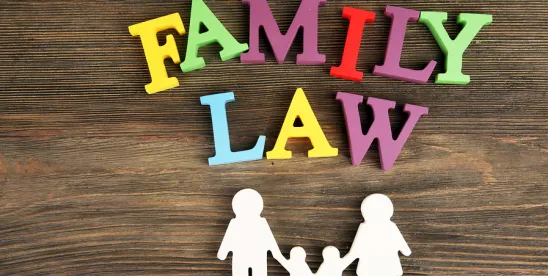After much anticipation, the New York State Department of Labor recently finalized the regulations accompanying the New York Paid Family Leave Benefits Law (“PFL Law”). Although the law becomes effective on January 1, 2018, employers subject to the law should start preparing accordingly. The PFL Law will cover most private employers in New York, with few exceptions, and it will provide wage replacement and job protection to employees who need time off to bond with a new child, care for a family member with a serious health condition, or assist when a qualifying family member has been called to active military duty. New York State has made available on its website fact sheets for employers here and for employees here highlighting the law’s key provisions.
In addition to familiarizing themselves with the PFL Law’s requirements, covered employers should also be mindful of the newly finalized regulations, which cover a range of important issues, including the following:
-
Collections—covered employers may, but are not required to, start collecting weekly employee contributions starting July 1, 2017.
-
Notifications—if a covered employer has written policies or guidance (e.g., a handbook) on employee benefits or leave, information on and employee obligations under the PFL Law must be included in the written policies or guidance.
If a covered employer does not have such written policies or guidance, the employer must give employees written guidance on their rights and obligations under the PFL Law, including information on how to file a claim for benefits.
Covered employers must also display or post, and keep posted, in a conspicuous location a printed notice concerning the PFL Law in a form officially prescribed, which has yet to be issued. -
Waiver of PFL benefits for certain employees—in limited circumstances, the law allows employees to opt out of the protections of the law if their regular schedule is (1) 20 hours or more per week, but they will not work 26 consecutive weeks; or (2) fewer than 20 hours per week, but they will not work 175 days in a consecutive 52-week period. Any such waiver must be in writing, signed, and retained by the employer. The waiver expires after any change to the employee’s regular work schedule that requires him or her to continue working for 26 consecutive weeks or 175 days in a consecutive 52-week period.
An employee whose waiver has been revoked must start making contributions towards PFL benefits, including any retroactive amounts due from the date of hire, as soon as the employee is notified by the employer of such requirements. -
Maximum benefits—the regulations address the maximum available weekly leave and daily leave and offer examples of daily leave and instructions on how to calculate the rate for daily leave.
-
Leave to care for a family member with a “serious health condition”—the regulations define “serious health condition” as “an illness, injury, impairment, or physical or mental condition that involves: inpatient care in a hospital, hospice, or residential health care facility; or continuing treatment or continuing supervision by a health care provider.” The regulations exclude from this definition routine examinations, cosmetic treatments, and certain types of common ailments (e.g., the common cold, flu, earaches, upset stomach, minor ulcers, headaches other than migraine, and routine dental or orthodontic problems). The regulations also require the employee to be in close and continuing proximity to the care recipient and provide examples of what providing care may involve.
-
Leave to bond with a newly born, adopted, or fostered child—for leave taken for adoption or foster care, the regulations provide that such leave may be taken before the actual placement or adoption of a child in certain situations and expires at the end of the consecutive 52-week period starting on the placement date or the first day leave is taken. For leave for birth, the regulations note that such leave expires at the end of the consecutive 52-week period starting on the date of birth.
-
Interaction with the Family and Medical Leave Act (FMLA)—the regulations require covered employers to notify eligible employees when PFL leave is concurrently designated as FMLA leave and provide notice required under the FMLA. If employers fail to do so, they are considered to have allowed the eligible employee to take PFL leave without simultaneously using FMLA leave.
The regulations also provide that if an employer designates a period of FMLA leave as leave covered by the PFL Law, and so informs the employee of that designation, then the employer and its insurance carrier may count the leave against the employee’s maximum duration of family leave in a 52-week period under the PFL Law if the employee declines to apply for PFL leave.
Further, the regulations state that where an eligible employee takes FMLA in less than full-day increments, the employer may deduct one day of PFL benefits from the employee’s annual leave entitlement when the total hours taken for FMLA leave in less than full-day increments reaches the number of hours in the employee’s usual work day. -
Processing requests for PFL leave—employees seeking PFL leave must complete a form to request leave, and once the employer receives it, the employer must fill out the employer information portion and return it to the employee within three business days. The regulations provide that the employee is then to submit the request for PFL leave, along with any necessary certifications or documentation, to the carrier or self-insured employer. The regulations allow for receiving requests for PFL benefits in advance of the occurrence of a foreseeable qualifying event.
In light of these finalized regulations, employers should consider taking the following steps:
-
Contact their current New York disability benefits insurance carrier to learn more about securing PFL coverage, including the amount of the premium.
-
Identify any employees who may be eligible for a waiver, notify them in writing of their waiver options, and collect and retain any waiver forms signed by the employee.
-
Update any relevant written policies or guidance to account for the PFL Law, or otherwise draft guidance on employees’ rights and obligations under the PFL Law.
-
Ensure that FMLA notification requirements are being fulfilled and there is an appropriate form to notify employees of the concurrent designation of FMLA and PFL leave.
-
Plan for conspicuously displaying or posting the required notice on the PFL Law.
-
Put in place internal procedures for completing the employer part of the employees claim form for PFL benefits.
-
Ensure human resources and other personnel responsible for managing compliance with the PFL Law are appropriately trained on the new law.




 />i
/>i

